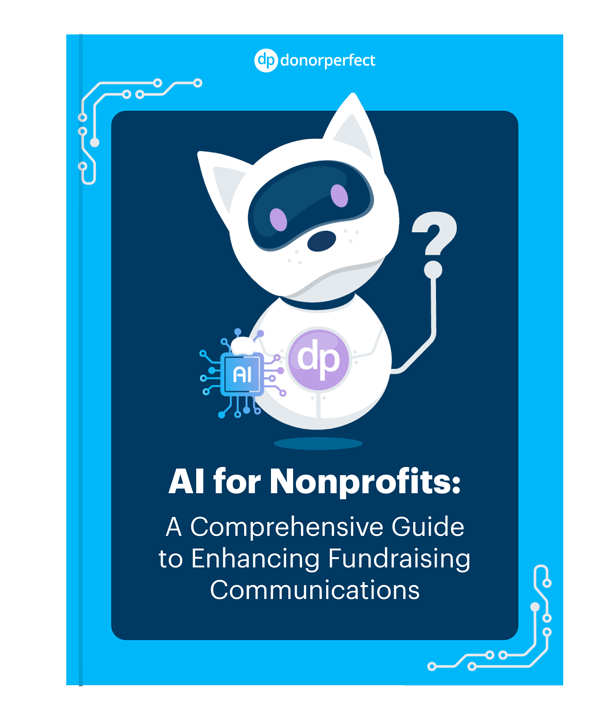Nonprofit Technology & Fundraising Blog
Subscribe to our mailing list

June 13, 2024 | Donor Acquisition
There are a lot of good organizations working to help society and one of the biggest challenges many of them face is making the transition from surviving to thriving.
By prioritizing growing your community, you can find sustainability for your nonprofit. Way easier said than done, obviously! But the road to a reliable future for your organization starts with many hands who are eager and ready to help you make your vision happen.
Here are five essential elements to focus on now so you can enjoy a sustainable future.
Leadership is a foundational element of nonprofit success. For example, a non-profit founder has to be able to articulate a clear and inspiring statement of why their organization exists. They should be able to explain the future they want to achieve and guide a community of supporters in getting there.
But leadership isn’t limited to your board or executive team, nor should it be. Think beyond being the decision-maker for a group of people to find other opportunities for others on your team to shine.
Could volunteers provide creative direction for a postcard your nonprofit sends out with your next appeal? Or perhaps your administrative assistant could explore new ways to find new and prospective donors in your data and create their regular reporting system.
Leadership opportunities give those who take them the chance to have more stake in your nonprofit. They also take some of the pressure off of people in more visible leadership roles. Just be sure to fairly compensate and recognize everyone who steps up to the task!
Interested in learning more about nonprofit leadership at all levels? Check out this blog post on 7 leadership red flags, and how you can turn them green!

Disruption and adaptability are essential ingredients for a modern nonprofit. Leaders and teams who understand the changes that are coming, particularly in business processes and technology, and can adapt to the evolution have a distinct competitive advantage.
Sophisticated donors understand that philanthropy is always evolving. For example, if your nonprofit seeks to live by the principles of community-centric fundraising, then a high-budget, traditional gala that prices out your everyday supporters might not be your most effective strategy.
Canceling an annual gala in favor of more inclusive fundraising practices might ruffle some feathers, but it can also establish you as a changemaker. When your donors learn your reasoning, they can rest assured that they’re supporting an organization that is true to its word and responsible with its resources.
Leading nonprofits understand that “money” is not a dirty word and is a resource that requires frequent discussion. If you are shy about what you need to run your nonprofit, then you’re not going to get what you need to live out your mission.
Talking about money and being comfortable with the topic has a direct impact on your bottom line. While not everyone on your team needs a sophisticated understanding of your budget and fundraising strategy, they should have a basic understanding of the resources your nonprofit needs to thrive.
Try creating a short, broadly applicable elevator pitch or bulleted list of needs for anyone who picks up the phone, answers emails, works behind the counter, or otherwise acts as a public face for your nonprofit. Make sure they’re all comfortable discussing money, and give them opportunities to practice as appropriate.
When a potential new donor approaches your nonprofit, anyone who encounters them will give them the confidence to invest in your mission, since they’ll be prepared with the basics they need to answer common donor questions.
Where are your fundraising strengths and weaknesses? There’s a lot you can glean from your data! Get actionable data insights with DonorPerfect. Sign up for a demo to learn more!
Already a DonorPerfect user? Get even more from your fundraising data with DonorSearch!

Having a strategic plan isn’t new advice. However, it often happens that many nonprofits go through the process of creating a long-term plan toward their vision – including hiring outside counsel – and that plan gets placed on a shelf to collect dust once the day-to-day work gets too distracting for future planning.
A plan should be a living document that is part of the fiber of your organization and against which you measure your work. Understanding the vision, goal, and strategies that you will use in all aspects of your organization will help you grow and develop beyond the day-to-day. Develop the plan and collectively agree to follow through on it.
You don’t need an entire menagerie of software, apps, and expensive gadgets to thrive. But it certainly helps to leverage technologies that can help streamline your fundraising efforts and make your life easier.
Generative AI is free and easy for nonprofit professionals to use. Want to learn how to leverage the power of AI for good? Get your copy of our free guide, AI for Nonprofits!

With so many potential products on the market promising to automate your fundraising, do your laundry, and pick up your kids, how do you know what’s worth paying for and what’s just flashy noise? Check out independent reviews from real fundraising software users, and try our checklist to see if specialized fundraising software is the right fit for your nonprofit.
Building a community of loyal supporters is challenging, but certainly not impossible. These five elements of nonprofit sustainability don’t make an exhaustive list but can be a big help in setting you up for success.
Want more help attracting new donors to your cause? We teamed up with nonprofit digital strategist Dana Snyder to create the free guide, Your Personalized Growth Plan to Find New Donors. Just answer five quick questions for a growth path that’s tailored to your unique needs, or download our PDF guide below to choose your next steps!
Follow us on social!